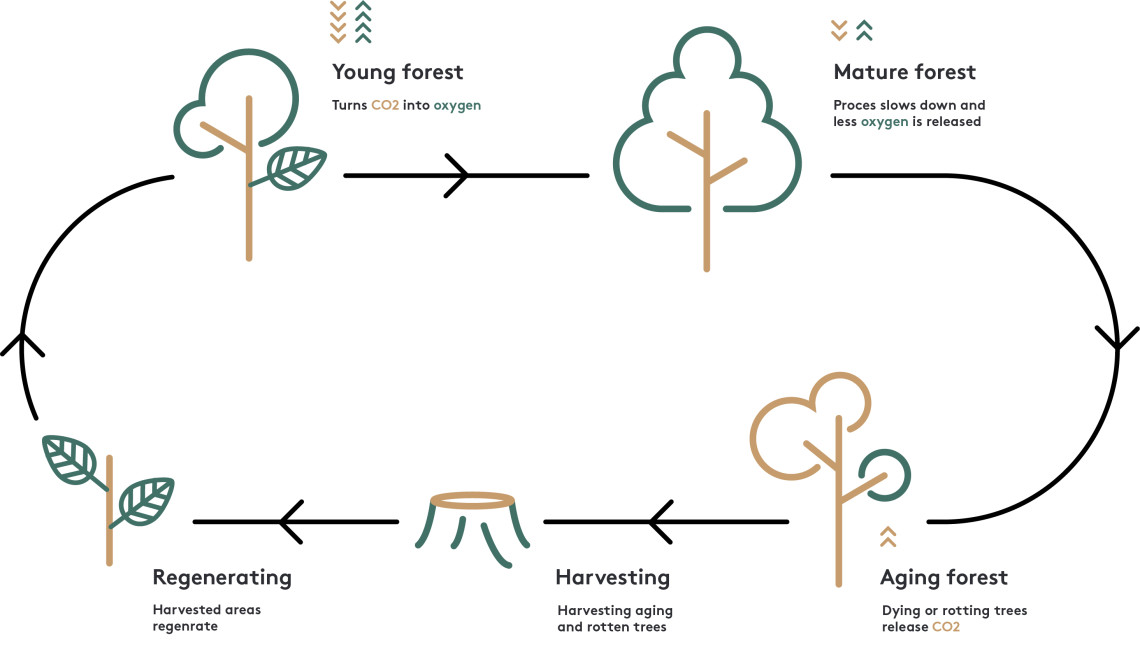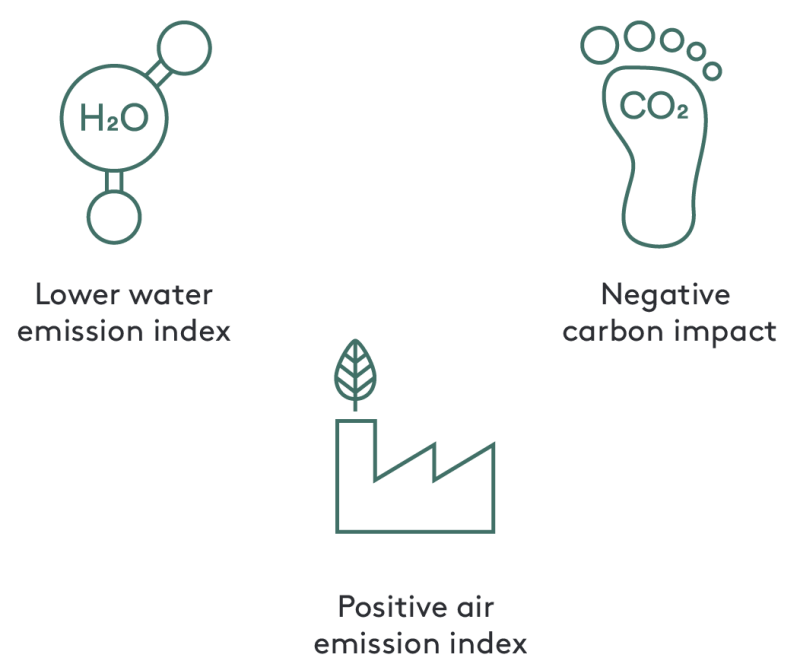Using wood saves the forests
The biggest threat to tropical forests is deforestation. As long as the forest generates income for the local population, the forest will remain forever. So if we don’t use the wood of the forest, we will lose the forest. In tropical rainforests, 1 ha can hold 500 to 1,000 trees. Sustainable forest management means harvesting 1 to 3 trees per hectare, every 25 years.
Sustainable forest management is the key to guarantee the safeguarding of the forests’ future, everywhere in the world.
Download our Responsible Purchasing Policy

What is sustainable forest management?
A tree absorbs the maximum of CO² while growing. Sustainable forest management implies that a tree is harvested before the quality of the tree starts to deteriorate and would release the stocked CO² back into the atmosphere. Harvesting the tree will generate space and allow the younger trees to grow.
By transforming a mature tree into building material, carbon is being stored in its core forever.

How can we make sure that only the selected trees are harvested?
By installing and applying a sustainability label, guaranteeing that
Only mature trees are felled
Young trees are protected
Older seed-bearing trees are preserved
As a result, the forest regenerates itself, ensuring an everlasting legal source of income for the population.
“ Sustainable forest management means using forests and forest land in a way, and at a rate, that maintains their biodiversity, productivity, regeneration capacity, vitality and their potential to fulfil, now and in the future, relevant ecological, economic and social functions, at local, national, and global levels, which does not cause damage to other ecosystems.” _EU 2013 Forest Strategy
Maintaining the forests requires a detailed forest inventory and a strict management plan. The economic value of the forest becomes an essential pillar for safeguarding its future, by avoiding the risk of conversion to other uses, such as agriculture, plantations, mining and building development.
“The forest that pays is the forest that stays”.
Timber is a living material that lasts longer than a lifetime. It's beautiful, ecological, recyclable and biodegradable.
Using timber tackles climate change
A sustainable Eco cycle system is based on sustainable forestry, renewable materials, recycling and energy recovery. On top of this, the carbon dioxide released in the global system is absorbed by the growing trees, thus avoiding adding to the greenhouse effect.
Wood captures CO²
Trees capture CO², as a result, wood is a CO²absorption building material.
Each cubic meter of wood holds about 1 ton of CO², captured from the atmosphere. The total ‘biogenic’ carbon stored in the forests of Europe is estimated at almost 13 billion tonnes. This total is growing with 167 million tonnes per year.
The carbon performance of wood in comparison with other building and construction materials is impressive:
Producing 1 ton of steel emits 1.24 tons of CO²
Producing 1 ton of aluminum emits 9.3 tons of CO².
Using 1 ton of wood absorbs 1 ton of CO² from the atmosphere and stocks it in the timber until it is eventually burnt.

Wood as a sustainable building and construction material
Wood boasts several ecological advantages compared to traditional materials: it has low embodied energy, a low carbon impact and it is sustainable.
“We know that the construction sector can even be turned from a carbon source into a carbon sink if organic building materials like wood and smart technologies as Artificial Intelligence are being used”, said President Von der Leyen in her 2020 State of the Union address to the Parliament."

Embodied energy
The production of building material needs energy. Embodied energy is the energy consumed by all processes associated with the production of a material, from mining to manufacturing to transport.
As a resource, wood consumes a minimal amount of energy: wood grows with the energy of the sun. In the production cycle, energy is only used to cut the tree, to process and to transport it.

Global Warming Potential
Global warming is the major, over-riding environmental issue of our time.
Greenhouse warming is imminent and has never been more present than today. The most dangerous climate changes may still be avoided if we transform our fossil-fuel based energy systems towards renewable energy sources and renewable materials such as wood. The global warming potential of wood is low, thanks to the following:

Wood has a low water emission index, in fact, forests regulate the water cycle, prevent flooding and create clouds.
Wood has a positive air emission index: working forests are the most powerful clean-air technology on earth, absorbing CO² and releasing oxygen.
Wood has a negative carbon impact: as shown above, wood functions as a key carbon stock.

Renewable. Sustainable. Recycable.
Using 1 tree is protecting 100 trees.
The Eco cycle of wood includes re-use, repair and recycling. When these products reach the end of their lifespan, the carbon dioxide is released into the atmosphere, as the waste decays or is recycled as bioenergy. The carbon dioxide is then again captured by the trees and converted into nutrients and new building blocks for their growth.
Unlike metals and fossil fuel-based products (such as plastics), the forest resources are renewable, and with proper management a cycle of wood products can be maintained forever.
